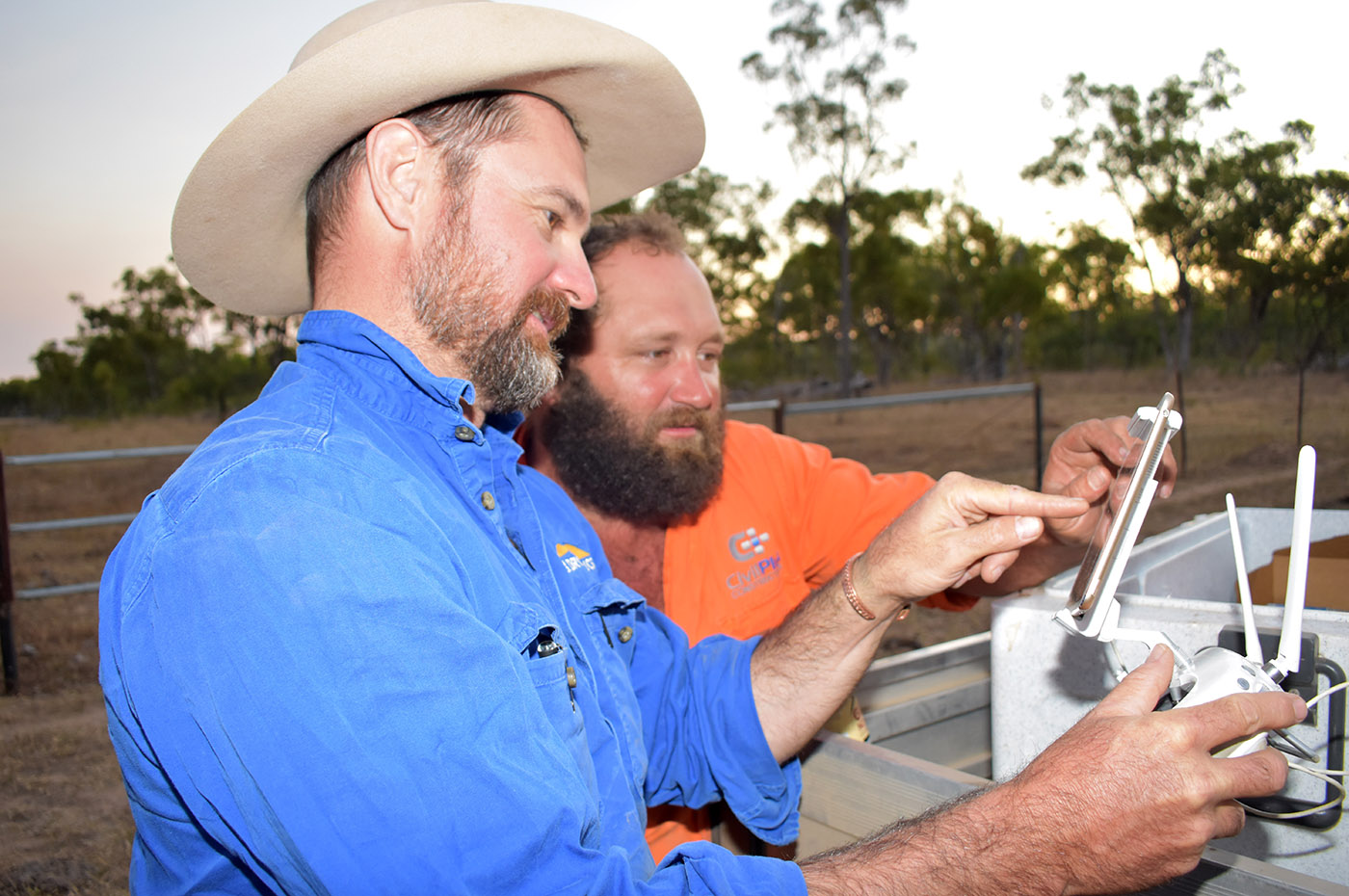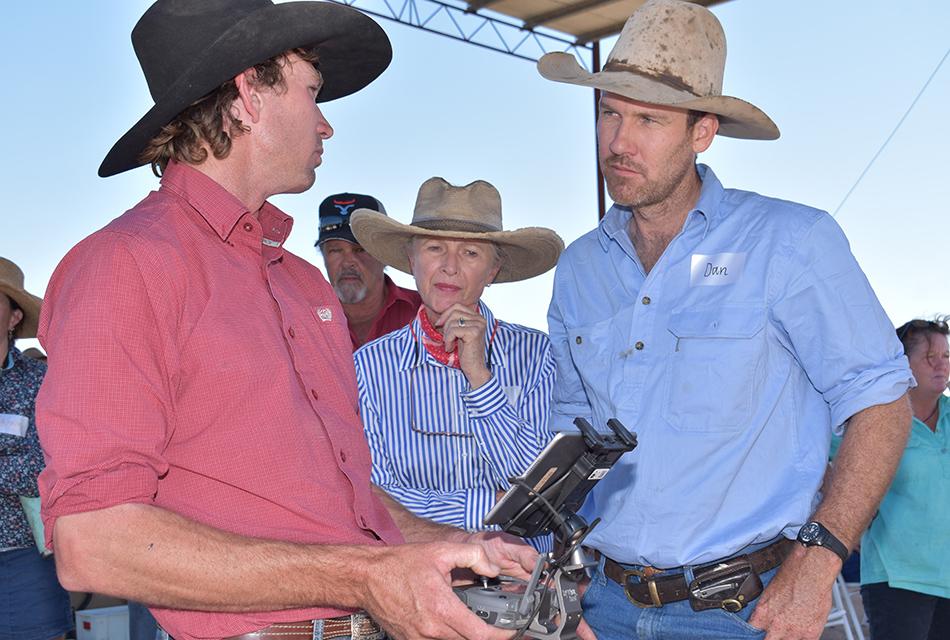
The easy way to inspect on-ground works. NQ Dry Tropics’ Senior Grazing Field Officer Chris Poole shows New Moon grazier Cameron Heading a drone’s eye view of one of his new dams.
Technology provides bird’s eye view of problem areas
Drones are giving NQ Dry Tropics’ field staff greater reach, more information and a new perspective on land condition and grazing patterns as they support graziers to repair degraded or eroding land.
Grazing Team Leader Josh Nicholls and Senior Grazing Field Officer Chris Poole made a short presentation to the biennial Australian Rangeland Society conference in Longreach recently about how they applied the new technology.
Mr Poole said it was particularly useful for them as they prepared Land Management Action plans for graziers operating on rugged and inaccessible country.
“Our GRASS plans revolve around land condition and water quality, and drones help us to quite literally get a bird’s eye view of the problems we’re addressing,” he said.
The unique perspective drones offered paired with data from the Department of Environment and Science enabled them to do extensive desktop analysis of properties even before they arrived.
“These technologies capture more accurate data that informs decisions that achieve beneficial production and ecological outcomes.”
The GRASS Program is funded through the Queensland Government Reef Water Quality Program and is delivered by the Department of Agriculture and Fisheries, Burnett Mary Regional Group, Fitzroy Basin Association and NQ Dry Tropics.
Contact Mr Poole for more information about the GRASS program by email at chris.poole@nqdrytropics.com.au.

Glendon helicopter and drone pilot Lyle Gillham demonstrates how an off-the-shelf drone can be used to muster cattle. Looking on is Dan Lyons, Niall Station (right) and Zoe O’Neill Mt Owenee.
